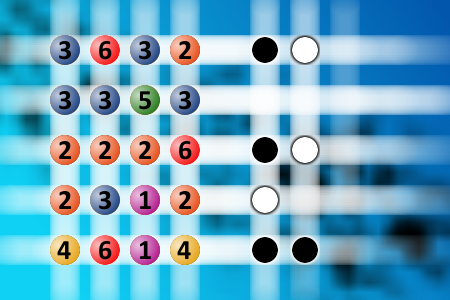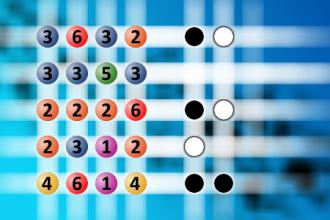Find the right combination
The computer chose a secret code (sequence of 4 digits from 1 to 6). Your goal is to find that code. Black circles indicate the number of hits on the right spot. White circles indicate the number of hits on the wrong spot.
The latest mergers
Hale Business Systems, Mary Kay Cosmetics, Fuller Brush, and W.R. Grace Company merge to become Hale Mary Fuller Grace.
Polygram Records, Warner Brothers, and Keebler Crackers merge to become Polly-Warner-Cracker.
3M and Goodyear merge to become MMMGood.
John Deere and Abitibi-Price merge to become Deere Abi.
Zippo Manufacturing, Audi Motors, Dofasco, and Dakota Mining merge to become Zip Audi Do Da.
Honeywell, Imasco, and Home Oil merge to become Honey I'm Home.
Denison Mines, and Alliance and Metal Mining merge to become Mine All Mine.
Federal Express and UPS merge to become FED UP.
Xerox and Wurlitzer will merge and begin manufacturing reproductive organs.
Fairchild Electronics and Honeywell Computers will merge and become Fairwell Honeychild.
3M, J.C. Penney and the Canadian Opera Company will merge and become 3 Penney Opera.
Knott's Berry Farm & National Organization of Women will merge and become Knott NOW!

